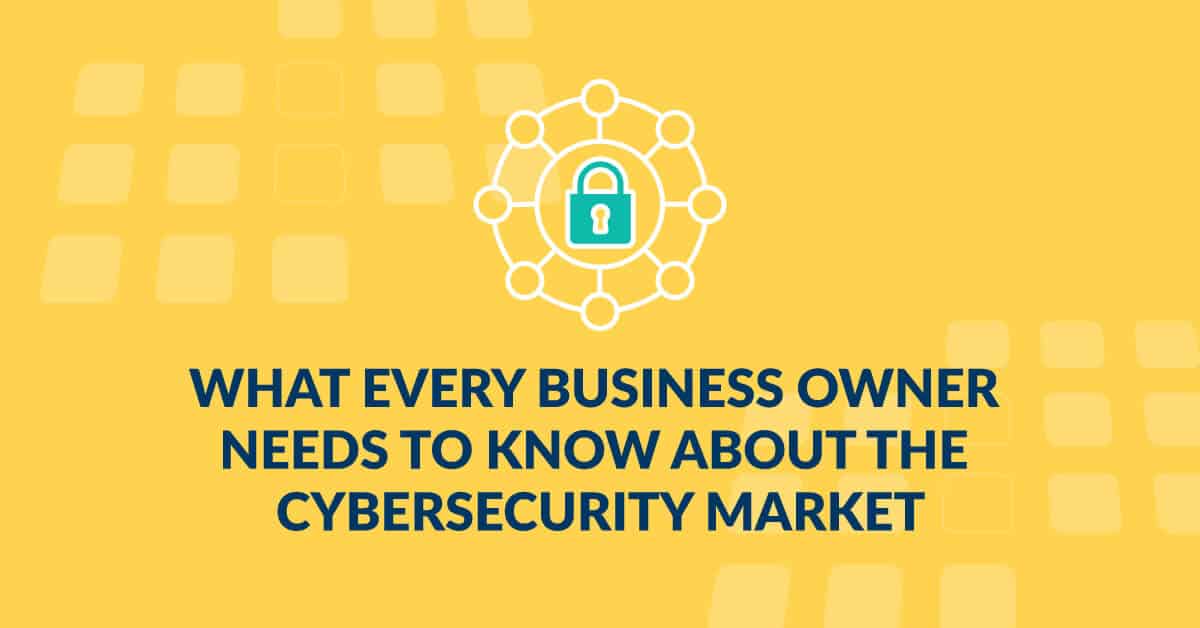The growing prevalence of cybercrime has made securing federal information systems a top priority for the U.S. government. National and international pressures on the U.S. government regarding cybersecurity regulations and standards have expanded the federal cybersecurity market considerably.
Business owners should take note of how the U.S. government is investing in cybersecurity. By monitoring the federal cybersecurity market closely, business leaders can gauge how much they may need to invest in cybersecurity to keep their business safe. This information can also be useful for keeping up to date with recent developments in cybersecurity best practices.
The Current Cybersecurity Landscape in USA
Cybersecurity attacks and data breaches happen more often than ever. They also have more devastating consequences than ever before. 2018 saw the infamous Equifax data breach, followed by other high-profile breaches. Breaches at Marriot and Quora compromised the collective data of over 600 million users. Other data breaches at Google, Facebook, Chegg and TicketFly compromised the data of hundreds of millions of individuals. If these numbers aren’t shocking enough, Yahoo revealed in 2017 that all 3 billion of its user accounts were compromised.
It’s not just big businesses that are suffering from a dramatic uptick in cybercrime. Forty-three percent of cyberattacks target small businesses, and 60% of small businesses go out of business within six months of a cyberattack occurring.
In addition to increasing their output of cyberattacks, cybercriminals are constantly evolving their approach to cybercrime.
Here are some of the biggest upcoming threats in cybersecurity:
- Phishing is becoming more sophisticated. Cybercriminals have moved away from obviously fake emails or letters and have started infiltrating messaging services to enact cyberfraud.
- Ransomware is on the rise. The infamous WannaCry ransomware attack affected over 300,000 institutions globally. The WannaCry software is still alive and well today, and continues to cause problems for health care institutions.
- Cryptojacking is a new threat. Cryptojacking allows cybercriminals or state spies to compromise infrastructure elements such as electrical grids, water treatment facilities and military systems.
- The vulnerabilities of the IoT and smart devices are being exploited. Smart devices or devices connected to the IoT are notoriously easy to hack. They’re also more popular than ever. Projections indicate that some 75 billion devices will be connected to the IoT by 2025.
Trends And Drivers Shaping The Federal Information Security Marketplace
The U.S. government has invested heavily in curbing cybercrime even when it is not directed at federal resources. When big businesses on U.S. soil suffer data breaches, U.S. citizens are often the most impacted. Additionally, the costs of private data breaches often wind up on the shoulders of the Federal Trade Commission (FTC). Lastly, the increase in cyberattacks on small businesses has incredibly negative implications for the U.S. economy. A staggering 99.7% of employer firms are small businesses, and small businesses account for 64% of new private-sector jobs. It is in the best interests of the U.S. government to increase cybersecurity regulations across the country to protect the economy and businesses.
More and more pressure is being put on the U.S. government to increase cybersecurity standards and create new cybersecurity regulations. Other entities have adopted rigid cybersecurity regulations to counter the efforts of cybercriminals. One example of such regulations is the EU Cybersecurity Act. The lack of similar legislation in the U.S. puts international pressure on the U.S. to increase cybersecurity spending.
What Increased Federal Cybersecurity Spending Means For Businesses
Projections estimate that the U.S. government will increase spending on cybersecurity from $10.9 billion in 2018 to well over $14.1 billion in 2023. This represents a Compound Annual Growth Rate (CAGR) of 5.3%. The global cybersecurity market is expected to reach over $269 billion by 2026.
This means that businesses as well should be investing heavily in cybersecurity. Business leaders should realize that it only takes one data breach or cyberattack to cripple or even destroy a company. In fact, 60% of small businesses hit by a data breach fold within six months.
Improved cybersecurity is an investment sure to pay off in the long term. According to research by Accenture, the average data breach costs a business $2.4 million. That’s not even accounting for the decreased client loyalty and PR disasters data breaches often cause. Investing in cybersecurity hardly seems burdensome in comparison.
SecureTech has been a leading provider of Cybersecurity Services in San Antonio for over 20 years. We can help your company set up a secure network or increase the security of your existing network, data or systems.

